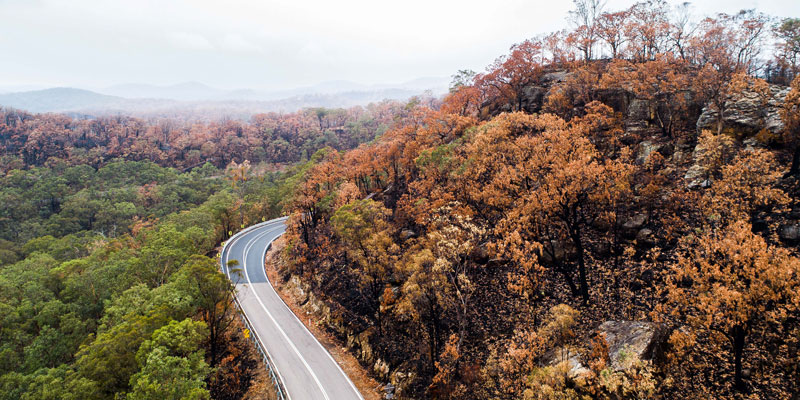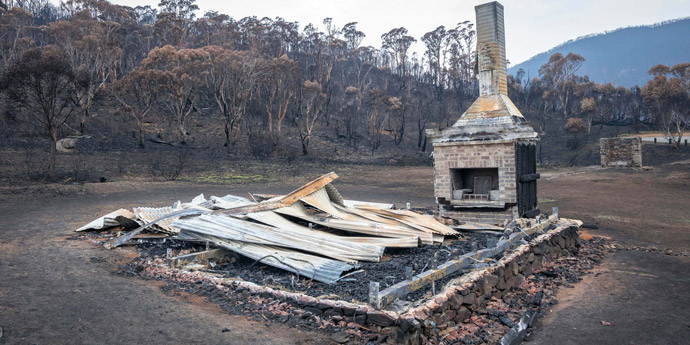Our climate is changing
05 April 2022
Everyone in NSW has been affected in some way by events associated with climate change. From extreme weather events impacting our homes or the places we value, to the resulting disruptions to supply chains, power services and industries. Understanding how our climate is changing – and how it is likely to change in the future – is the key to helping us adapt to the impacts of climate change. Esther Bailey, Director of the Climate Resilience and Net Zero Emissions Branch of the NSW Office of Energy and Climate Change says:
Taking action now to adapt to climate risks will help protect NSW people and environments, and also reveals new opportunities for investment and innovation to ensure a sustainable and prosperous future for all NSW residents.
With the latest contribution to the global climate assessment report recently released by the Intergovernmental Panel on Climate Change (IPCC), we more clearly understand the impacts and damages that have already been caused by climate change, and the impacts that are expected to occur in the future. The report includes an assessment of Australasia’s key climate risks, adaptation work already underway, barriers to adaptation, and what further action is needed. Dr Giovanni Di Virgilio, Principal Scientist, Climate Research, Climate and Atmospheric Science Branch, NSW Government Department of Planning and Environment, says:
This body of work is critical to guiding our research and policy. It warns of worsening climate change impacts on Australia, like changes to the intensity, frequency and duration of extreme heat and fire weather.
A synthesis of the report is delivered through the IPCC’s Australasia climate change impacts and risks fact sheet. It highlights 9 key risks relating to particular ecosystems, people and industries, and extreme weather events. It also introduces new types of complex climate risks. Many of these risks resonate here in NSW, as highlighted below. Action on climate change by all sectors of society continues to grow, with many NSW councils, businesses and communities already taking steps to help manage climate risks.
Climate risks to ecosystems
NSW’s diverse ecosystems are threatened by climate change – from our mountains and forests, to our inland plains and rivers, to our coasts and oceans. Of the key risks highlighted in the IPCC report, 3 are related to important NSW ecosystems and species: kelp forests, alpine areas, and particular vegetation species.
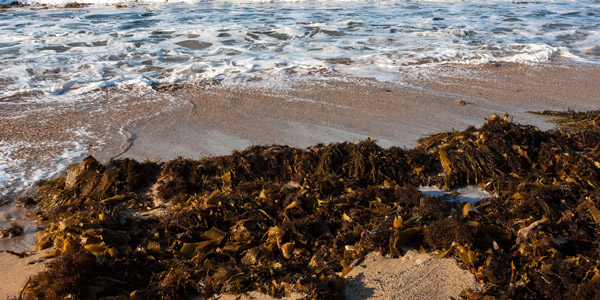
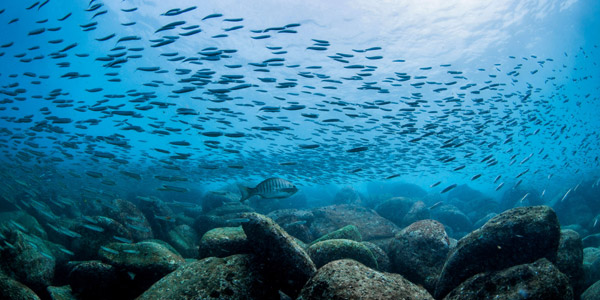
Marine life passing through Cabbage Bay Aquatic Reserve, Manly. Credit: Destination NSW
Marine risk
Ocean temperatures are increasing and impacting important NSW marine ecosystems such as kelp forests. Changes in these ecosystems have flow-on effects to culturally and commercially important marine species, as well as coastal communities, cultures, industries and environments.
Marine action
In response to this risk, the NSW Marine Estate Management Strategy 2018–2028 considers the impacts of climate change on NSW’s marine and coastal areas, to help both the environment and people adapt to future changes. Many NSW coastal councils and communities are taking action to build the resilience of their local marine ecosystems. For example, the Living Seawalls project by the Sydney Institute of Marine Science supports biodiversity to increase the resilience of marine environments.

Scenic aerial overlooking the alpine backcountry in Kosciuszko National Park. Credit: Destination NSW
Alpine risk
In alpine areas, warming temperatures are causing less snowfall. Further declines are expected as our climate continues to warm. This will have stronger impacts on NSW’s alpine areas and the unique alpine plants, animals and industries that depend on snow.
Alpine action
To help alpine areas adapt to these changes, the NSW Government invests in research and climate projections to understand how climate change impacts on alpine areas. The government also develops adaptation strategies that consider climate change in future planning, to help alpine tourism industries adapt to shorter snow seasons and expand their offering of year-round recreational activities. For example, the Snowy Mountains Special Activation Precinct involves the Department of Planning and Environment working with the Department of Regional NSW to develop a 40-year master plan for the Snowy Mountains precinct. The purpose of the master plan is to expand the precinct from a one-season visitor economy to a year-round destination – this will increase investment and jobs in the area, and help the Snowy Mountains precinct be more prepared for, and resilient to, climate change.
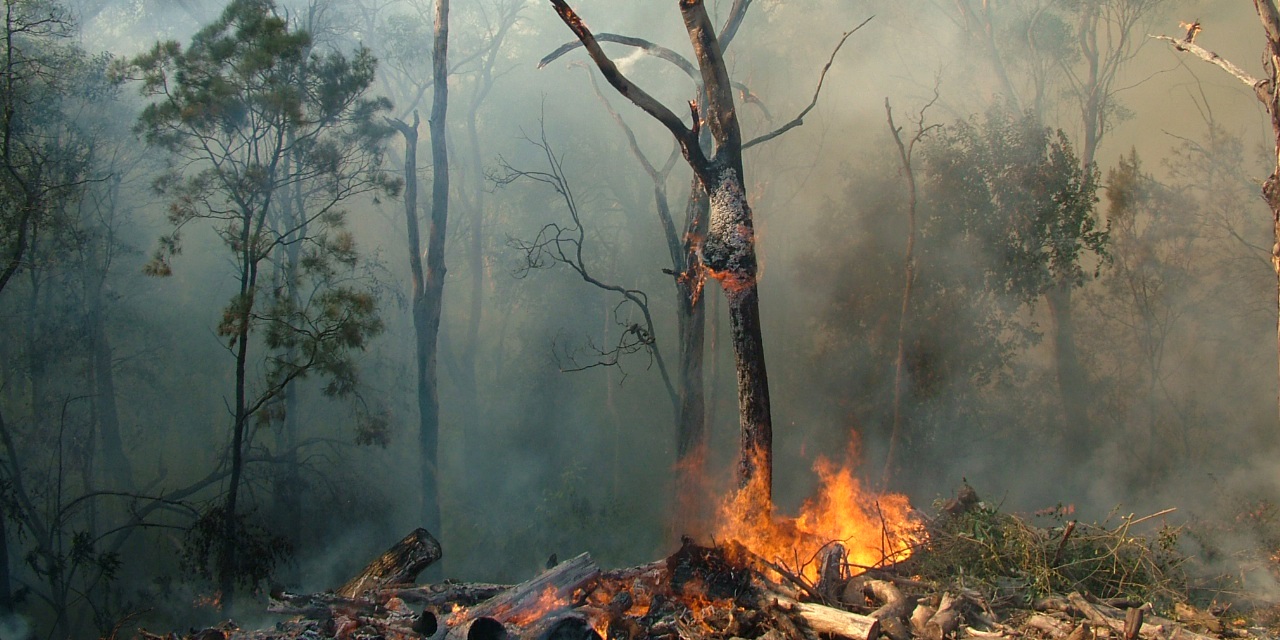
Small fire burning in a national park that shows smoke, fire and trees. Credit: Michele Cooper/DPIE
Vegetation risk
The distribution of vegetation across NSW is expected to change in response to climate change. Species with restricted habitats, such as alpine ash and snow gum woodlands, are at greater risk from rising temperatures, drier conditions, and increased fire weather. Changes in the distribution of vegetation species impacts entire ecosystems, as well as the industries and people that depend on them.
Vegetation action
Adaptation actions to help protect vegetation include reducing non-climate pressures such as land clearing. New fire management practices can also help, including preparing for fire seasons based on the latest climate projections. The NSW Bushfire Risk Management Research Hub brings together researchers, fire agencies, public land managers and Indigenous knowledge holders to build our understanding of bushfire behaviour and risk under a changing climate.
To support the preservation of biodiversity under a changing climate, a collection of online tools is available for natural resource managers to help guide revegetation activities that consider the uncertainties of climate change. The Climate-ready revegetation guide offers resource managers step-by-step instructions on where to find and how to use climate projections, and how to consider the suitability of species and appropriate habitat (or provenances) for revegetation projects.
Climate risks to people and industries
Aside from impacting our environmental values, climate change brings direct risks to our communities, cultures, industries and economy. Key risks highlighted in the IPCC report focus on the impacts of sea level rise on coastal infrastructure and communities, as well as risks to agricultural industries.

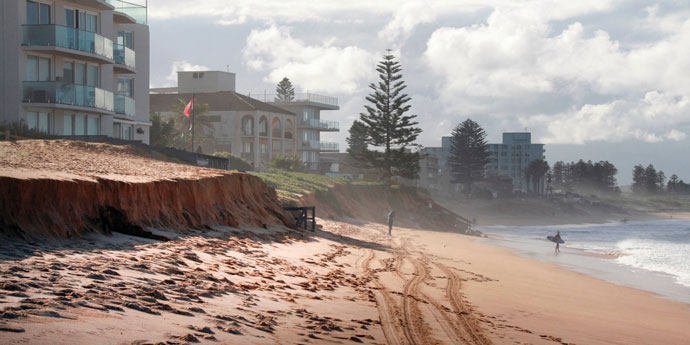
Stormy weather, beach erosion. Collaroy Beach located on Sydney's northern beaches is typical of developed coastlines. Changes in wave patterns and rising sea levels affect beach erosion during storms. Credit: Joanna Munnelly/DPE
Coastal risk
NSW coastal communities and industries are experiencing the impacts of sea level rise, including coastal erosion, storm surge, and flooding of low‑lying coastal areas. Sea levels are projected to keep rising – by 2100, the sea level is expected to increase by more than 1 metre in parts of NSW (depending on the level of greenhouse gas emissions).
Coastal action
Adapting to these changes includes reviewing planning processes and land uses to consider future sea levels, and improving coastal building and infrastructure designs so they can withstand future impacts. For example, the Northern Beaches Council is adapting to sea level rise by creating and using a tool to help upgrade and develop coastal infrastructure.

Winemaker Sam Brewer tending to the harvested grapes at Yarran Wines, Yenda just east of Griffith. Credit: Destination NSW
Agricultural risk
One of NSW’s largest industries – agriculture – is highly vulnerable to climate change. Warming temperatures and drier conditions are expected to cause a decline in crops, horticulture and dairy. NSW has already experienced the impacts of bushfire smoke on wine-grape growing, and the impacts of severe drought on crops and livestock. These impacts have flow-on effects to supply chains, farm businesses and rural communities.
Agricultural action
NSW agriculture industries and rural communities are adapting to these changes by using climate‑smart technologies and diversifying their agricultural practices (such as switching to drought-tolerant crops or changing the way they use their land). The Climate Resilience Podcast series shares stories from regional NSW communities to support adaptation to drier conditions.
As part of the NSW Net Zero Plan Stage 1: 2020–2030, the Primary Industries Productivity and Abatement Program supports farmers and land managers across the state to engage in regenerative land management practices. These practices have benefits for both land managers and ecosystems, such as capturing and storing carbon from the atmosphere to help limit further climate change; supporting ecosystem function to strengthen the resilience of the land; and supplementing income from production with credits earned through environmental markets. Together this helps to build the resilience of the land, the agricultural enterprise and regional communities.
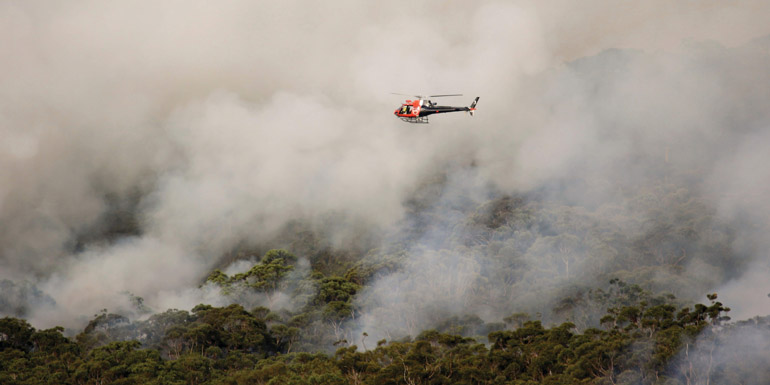
Park Air 3 working on the Woronora SFAZ Hazard Reduction burn in Heathcote National Park. Credit: David Croft/DPE
Fire risk
Fire weather risk across Australia has already increased since 1950, especially in south-eastern Australia. Climate projections show this risk is expected to increase further in some locations.
Fire action
Adapting to increased fire risks includes actions to reduce fire risk and help communities understand and prepare for fire events. For example, Ku-ring-gai Council is helping its residents prepare for bushfire events by using computer-based simulations to show how far and fast bushfires can travel in their local area.

Rising sun over NSW. Credit: DPE
Heatwave risk
In Australia, heatwaves are responsible for more human deaths than any other natural disaster. Extreme heat also affects workplace productivity, infrastructure and services (such as power supplies), and wildlife.
Heatwave action
Actions are already underway to help NSW communities and environments adapt to heat risks, such as increasing vegetation in urban areas to reduce heat. Through the Increasing Resilience to Climate Change grants, the NSW Government has helped councils and community groups adapt to heat. Several of these council projects were highlighted in the AdaptNSW webinar Adaptation in action: heat risks and opportunities in your local government area (held in December 2021), including Western Sydney Regional Organisation of Councils (WSROC)’s Urban heat planning toolkit. Community projects have also included heat management resources developed by Beyond Zero Emissions and Link Wentworth.
Complex risks
Climate change brings a variety of new risks to NSW. Because of the connectedness of our communities, environments, industries and infrastructure, a single climate risk can have flow-on effects to other parts of the system (known as a cascading risk), overlap with other risks (known as compounding risks), or enhance non-climate risks such as earthquakes or economic and social issues (known as aggregate risks).
Risk
Complex risks were seen in NSW following the 2019–2020 bushfire season. Heavy rains fell soon after fires had burned away vegetation, washing the exposed soil and ash into waterways (a compounding risk). This impacted water quality in rivers and water supplies, leading to environment and drinking water risks (cascading risks).
Action
Adaptation actions to help protect against these complex risks include creating flexible adaptation strategies that consider the unique values and local factors of each NSW region. Adaptation also has co-benefits to environmental, economic, social and cultural values of NSW.
The NSW Government is helping regions prepare for climate change through its Enabling Regional Adaptation work. This work considers the unique values and climate risks of each NSW planning region, which were identified by regional stakeholders through a series of workshops.
Values and risks were identified by considering the relationships between climate, community, economy and environment. Stakeholders then developed a vision of a climate‑resilient future for their region, supported by key opportunities and risks for each major system in their region (such as energy, tourism and disaster management). This work continues to help NSW regions adapt to the impacts of climate change by providing regional-scale information to support planning, climate risk management and decision‑making.
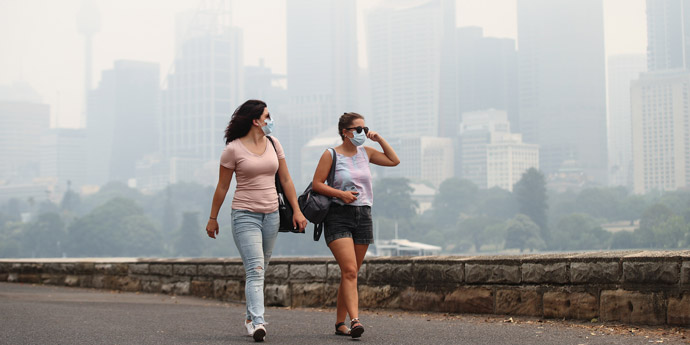
Strengthen your adaptation to climate change
Reducing greenhouse gas emissions, understanding the latest climate projections and considering all likely impacts are the first steps to ensuring a sustainable future. NSW has already taken actions across our state to reach net zero emissions by 2050 and prepare for our future climate – however, there is more work to do to adequately adapt to climate change. To strengthen NSW’s response to climate change, the NSW Government provides information and resources on the AdaptNSW website, including practical guidance for the NSW Government sector to assess and manage climate change risks.
The actions we take today help us adapt to our future climate. The How to adapt webpage provides information and actions to help you adapt – whether you work for a NSW state or local government, run a business, lead a community group or want to know what you can do as a household.
In March 2022, the Intergovernmental Panel on Climate Change (IPCC) released the second contribution to the Sixth Assessment Report (AR6), delivered by Working Group II in a report titled Climate Change 2022: Impacts, Adaptation and Vulnerability. The IPCC is an intergovernmental body of the United Nations responsible for advancing knowledge on human-induced climate change. View chapter 11 of the report for details on climate risks facing the Australian region.
Related news
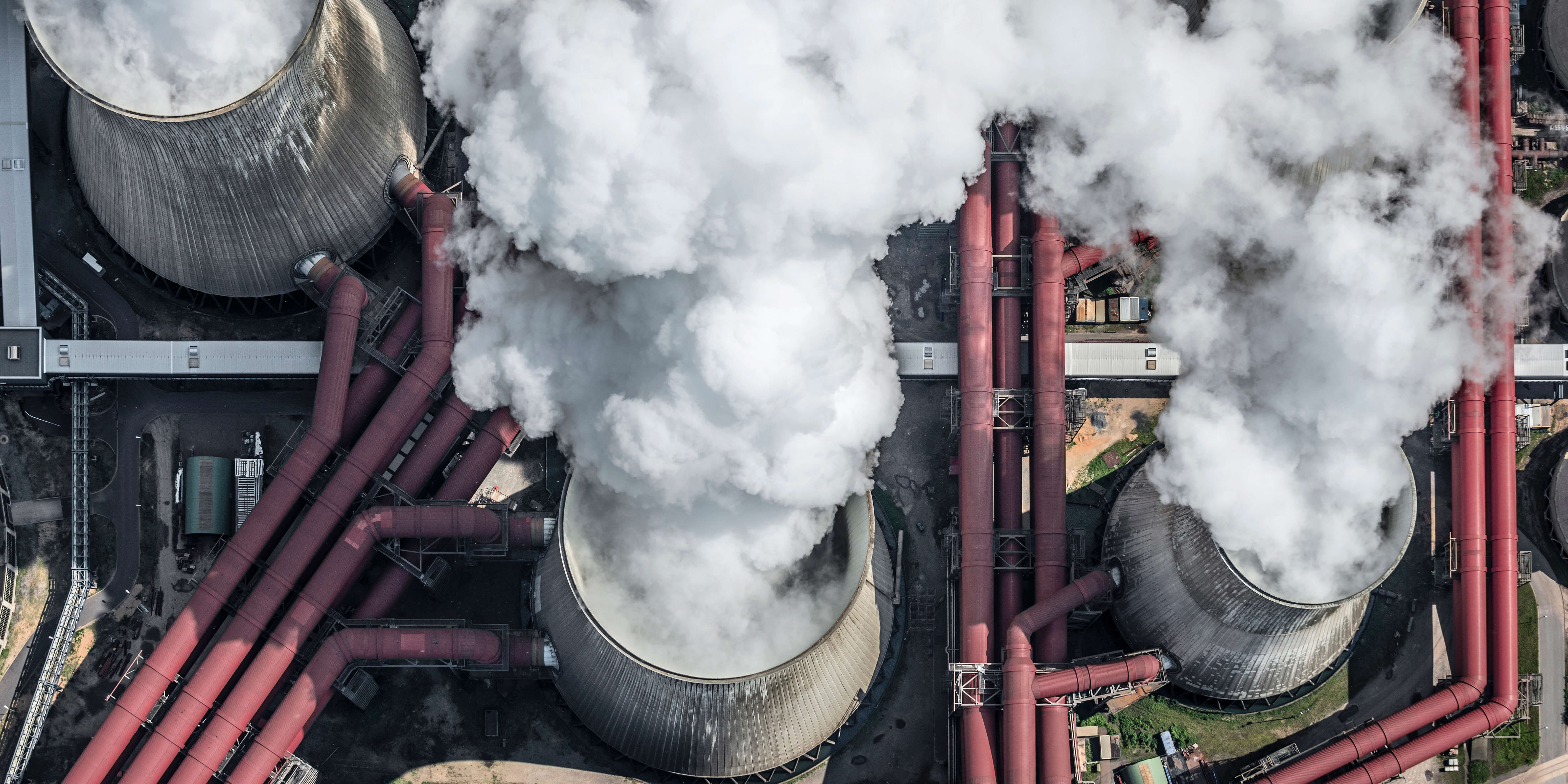
The latest update to future greenhouse gas emissions projections for all sectors of the NSW economy has been released. This work is helping to track our progress towards net zero.

High school students from across Western Sydney and the Central Coast gathered at Powerhouse Castle Hill for the Future Leaders Forum to explore climate leadership. Presented in collaboration with the NSW Department of Climate Change, Energy, the Environment and Water, the forum brought together students to connect and voice new perspectives on climate change and its impacts.

The NSW Government hosts three events for Climate Action Week Sydney in March 2025
